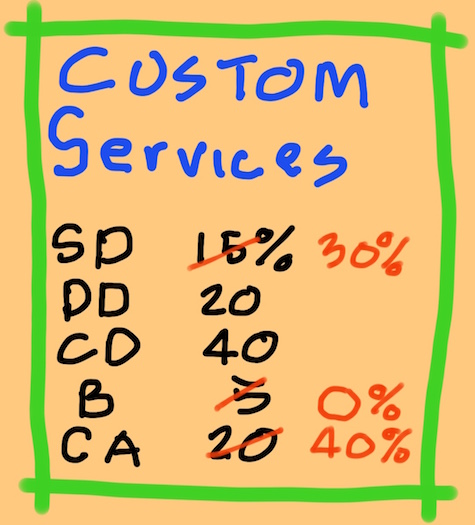|
When I published Feecalqs a while back, I failed to place the emphasis on the fact that Feecalqs is four linked electronic spreadsheets. This is important because the effort that it takes to arrive at a realistic fee for any project takes just a few minutes with a digital method of calculating fees. You already know the information that you need to enter, so it takes no time at all.
One of the four spreadsheet that you don't even have to look at is the Fee Tables. There are five tables representing the five Building Groups. These Building Groups arrange the different types of buildings into groups based on the difficulty of designing them. This Building Groups post shows the listing that I assembled from various sources. Here's what the fee tables look like and how they work... I have written a fair bit about Architectural Fees in the past. I guess I remember what a mystery it was to me at one time. I have covered the basics of Fee Tables here and the complexity of the typical Hybrid Project here. The remaining factor in determining the appropriate fee is Scope of Services.
What are you required to do to complete the project? If the answer is standard Basic Services, then the issue of Scope of Services is settled. Basic Services is the answer for a lot of smaller public projects. Something different than Basic Services is more likely the case in private work. Private clients don't fit the cookie cutter of public projects. They need more here and less there. That makes determining the appropriate fee more complicated. Here's the solution. |
x
Archives
February 2024
Categories
All
|
Architekwiki | Architect's Resource | Greater Cincinnati
© 2012-2022 Architekwiki
© 2012-2022 Architekwiki








